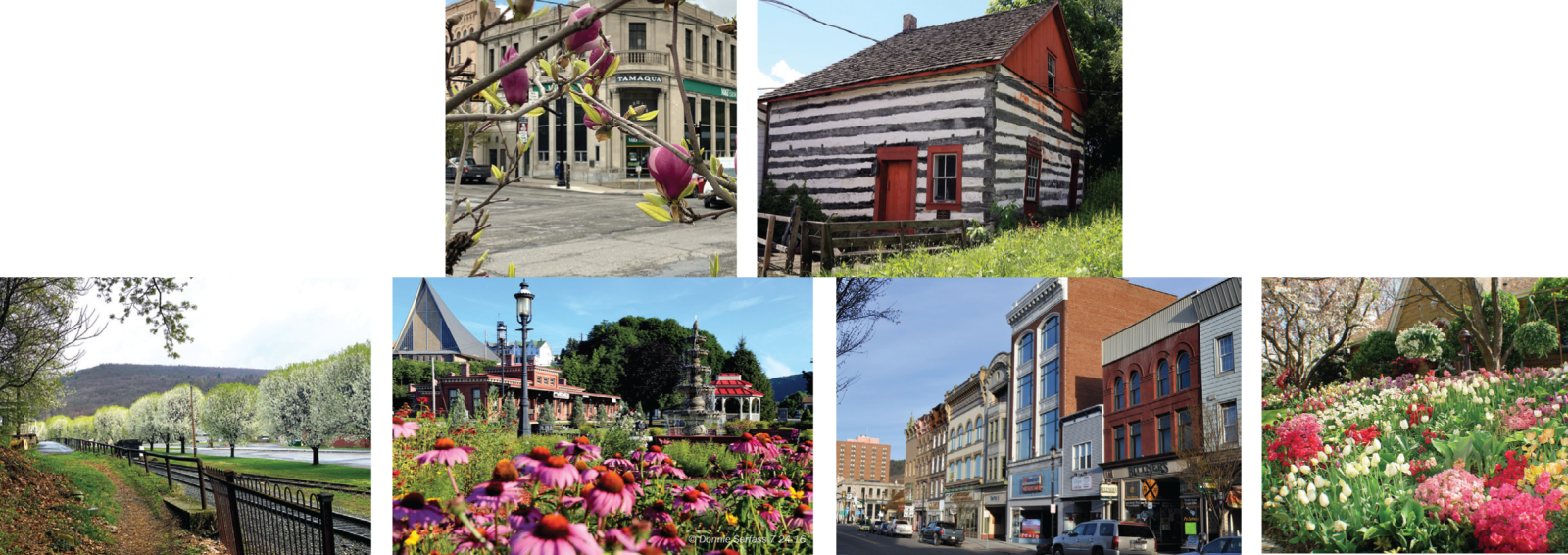The Borough of Tamaqua: A Welcoming Community
March 7th, 2023
“Tamaqua,” roughly translated from the Iroquois language as “land wherein dwells the animal who lives in the water,” or “beaver,” is located in eastern Schuylkill County at the intersection of Routes 209 and 309.
Tamaqua was settled in 1799 by Berkhard Moser, his son Jacob, and John Kershner, who built shelters and a sawmill at the junction of the Little Schuylkill River and Panther Creek, which is downtown Tamaqua today.
Around 1807, the first tavern in Tamaqua opened. The tavern was located in Berkhard Moser's house by the widow of John Kershner and her son-in-law, Isaac Bennett. In 1827, the Little Schuylkill Company, aspiring to draw the center of population to Dutch Hill, built the first stone building and hotel in Tamaqua. The house was converted into a dwelling 30 years afterward.
Irish, Welsh, and German immigrants came to the borough in the 1840s and 1850s followed by a large influx of Italians, Lithuanians, Russians, Ukrainians, Slovaks, and Poles in the 1890s and early 20th century. During the 1860s and 1870s, Tamaqua also was the geographic center hub for the Molly Maguires, 19th century Irish secret society.
Coal mining was a vital economic activity throughout the 20th century, but had since experienced a decline. Tamaqua also gained recognition as center for the railroad. In 1885, the Edison Electric Illuminating Co. of Tamaqua furnished the town with the nation's second incandescent municipal lighting system, a feat accomplished through the involvement with none other than Thomas Edison himself.
Longtime resident and author Donald Serfass reflects; “Growing up in Tamaqua was a wonderful experience. It's a town of vibrance, character and charm, with history dating back to a pioneer founding in 1799. Tamaqua is filled with interesting architecture and infrastructure from its heyday as a coal and railroad center and its role in helping to fuel America's Industrial Revolution. There's also Native American heritage, too, right alongside a 21st century transformation.
Tamaqua offers arts, recreation, entertainment, parks, festivals, sports, youth activities, clubs, churches and organizations, all packaged into a highly desired, small-town atmosphere.
In addition to its friendly people, Tamaqua's strategic location is one of its biggest assets - the foothills of the Poconos and Gateway to the Anthracite Region. It's a unique and welcoming community planning for the future with a special sense of pride and place. I treasure the years spent growing up in the town and still feel the same nowadays in retirement. There's something special about being part of the only town in the world named Tamaqua. A warm, happy, upbeat place. And it's home.”

“Tamaqua,” roughly translated from the Iroquois language as “land wherein dwells the animal who lives in the water,” or “beaver,” is located in eastern Schuylkill County at the intersection of Routes 209 and 309.
Tamaqua was settled in 1799 by Berkhard Moser, his son Jacob, and John Kershner, who built shelters and a sawmill at the junction of the Little Schuylkill River and Panther Creek, which is downtown Tamaqua today.
Around 1807, the first tavern in Tamaqua opened. The tavern was located in Berkhard Moser's house by the widow of John Kershner and her son-in-law, Isaac Bennett. In 1827, the Little Schuylkill Company, aspiring to draw the center of population to Dutch Hill, built the first stone building and hotel in Tamaqua. The house was converted into a dwelling 30 years afterward.
Irish, Welsh, and German immigrants came to the borough in the 1840s and 1850s followed by a large influx of Italians, Lithuanians, Russians, Ukrainians, Slovaks, and Poles in the 1890s and early 20th century. During the 1860s and 1870s, Tamaqua also was the geographic center hub for the Molly Maguires, 19th century Irish secret society.
Coal mining was a vital economic activity throughout the 20th century, but had since experienced a decline. Tamaqua also gained recognition as center for the railroad. In 1885, the Edison Electric Illuminating Co. of Tamaqua furnished the town with the nation's second incandescent municipal lighting system, a feat accomplished through the involvement with none other than Thomas Edison himself.
Longtime resident and author Donald Serfass reflects; “Growing up in Tamaqua was a wonderful experience. It's a town of vibrance, character and charm, with history dating back to a pioneer founding in 1799. Tamaqua is filled with interesting architecture and infrastructure from its heyday as a coal and railroad center and its role in helping to fuel America's Industrial Revolution. There's also Native American heritage, too, right alongside a 21st century transformation.
Tamaqua offers arts, recreation, entertainment, parks, festivals, sports, youth activities, clubs, churches and organizations, all packaged into a highly desired, small-town atmosphere.
In addition to its friendly people, Tamaqua's strategic location is one of its biggest assets - the foothills of the Poconos and Gateway to the Anthracite Region. It's a unique and welcoming community planning for the future with a special sense of pride and place. I treasure the years spent growing up in the town and still feel the same nowadays in retirement. There's something special about being part of the only town in the world named Tamaqua. A warm, happy, upbeat place. And it's home.”







